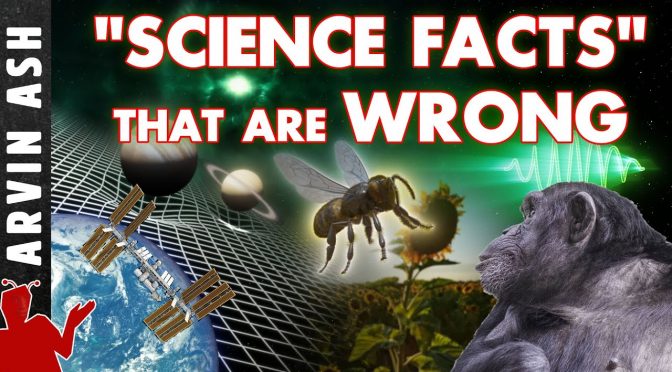This article is based on the video titled “Five SCiENCE ‘FACTS’ that are Widely Believed…but WRONG!” by Arvin Ash. The video delves into five commonly held beliefs about science that, despite their popularity, are fundamentally incorrect. This article aims to summarize and discuss these misconceptions in a clear and informative manner.
Misconception: There is No Gravity in Space
Contrary to popular belief, gravity exists everywhere in space. It has an infinite reach, as demonstrated by Newton’s law of universal gravitation. The force of gravity might be weak at vast distances from massive bodies, but it is never zero. Even the International Space Station, located about 250 miles or 400 kilometers in space, experiences nearly the same gravitational force as on Earth’s surface. Astronauts appear weightless not because there is no gravity, but because they are in free fall, constantly missing the Earth due to their orbital velocity.
Misconception: Nothing Can Be Faster Than Light
The belief that nothing can surpass the speed of light is a misunderstanding of physics. Physics does not set such a limit. While it’s true that no massive object can be accelerated to the speed of light, and information cannot travel faster than light (as it would break causality), the fabric of spacetime itself can expand faster than light. This phenomenon is believed to have occurred during the early universe’s inflationary period.
Misconception: Bees Shouldn’t Be Able to Fly
The claim that bees shouldn’t be able to fly according to physics is based on a misunderstanding. This belief originated from a flawed comparison of bee wings to bird wings. While birds generate lift only during the downward stroke of their wings, bees generate lift during both the upward and downward strokes, allowing them to fly despite their small wing size relative to their body.
Misconception: Humans Evolved from Chimpanzees
This is a common misunderstanding of evolutionary biology. Humans did not evolve from chimpanzees. Instead, humans and chimpanzees share a common ancestor from which both species diverged millions of years ago. This misconception likely arises from the fact that chimpanzees are our closest living relatives in the animal kingdom, sharing about 98% of our DNA.
Misconception: The Big Bang Theory Explains the Creation of the Universe
The Big Bang Theory does not explain the creation of the universe. Instead, it describes the rapid expansion of the universe from a very high-density and high-temperature state. The theory provides a comprehensive explanation for a broad range of observed phenomena, including the abundance of light elements, the cosmic microwave background radiation, and the large scale structure of the cosmos. However, it does not provide a description or explanation for what initiated the creation of the universe.
The video
Conclusion
These misconceptions highlight the importance of critical thinking and the need for accurate scientific communication. While these “facts” may be widely believed, they are not supported by scientific evidence and understanding. It’s crucial to question and verify the information we receive, especially in an era where misinformation can spread rapidly.
Misconceptions, even those widely accepted, can distort our understanding of the world. Science is a dynamic field, constantly evolving with new discoveries and insights. Always be open to learning and questioning, as that is the true spirit of scientific inquiry.

